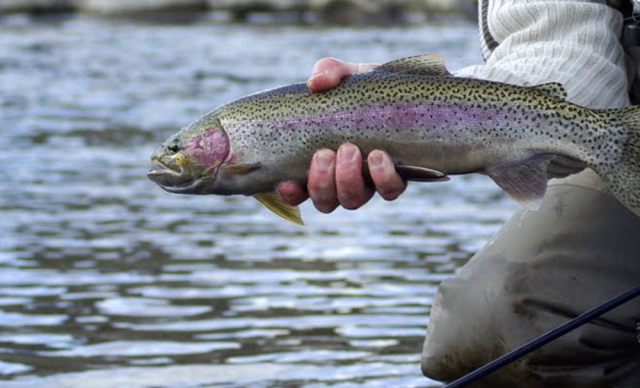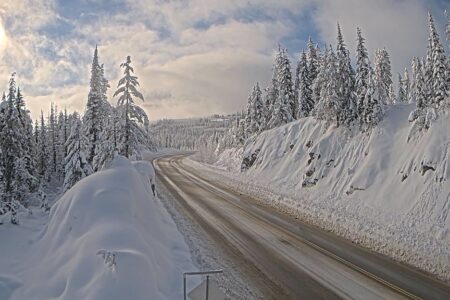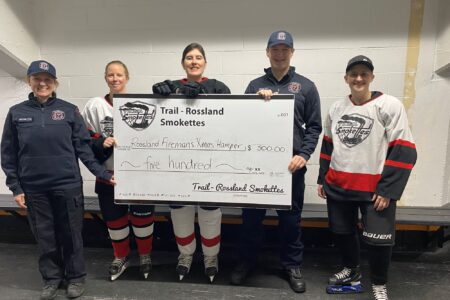Another record count of spawning Gerrard trout grace the West Kootenay
For the second consecutive year the daily peak count of Gerrard rainbow trout at the main spawning site in the Lardeau River hit a record high.
Nearly 1,000 spawning Gerrards were observed on May 13 the highest since record keeping began at the site in 1960.
“We were pleased with Gerrard numbers at the outlet of Trout Lake – this year reaching a daily peak of 995 spawners – especially since it comes on the heels of last year’s then-record high of 725,” said regional senior fisheries biologist with the Ministry of Forests, Lands and Natural Resources Operations (FLNRO), Jeff Burrows.
“It suggests that the Gerrard population in Kootenay Lake is doing very well, possibly better than at any other time in the past century.”
The monitoring of the Gerrard spawners and spawning habitat is supported by the Habitat Conservation Trust Foundation. It is one way biologists use to calculate the total Gerrard spawning run each year, this year estimated to be approximately 2,500 fish.
One reason for the strong returns is the Nutrient Restoration Program in Kootenay Lake. Although nutrients have been added to the North Arm since the early 1990s, South Arm additions are relatively new, starting in full in 2005.
The program is coordinated by FLNRO with funding for the North Arm from the Fish and Wildlife Compensation Program (FWCP) and BC Hydro due to the impacts of Duncan Dam, and from Kootenai Tribe of Idaho and Bonneville Power Administration in the South Arm due to impacts of Libby Dam in the United States.
“We know that nutrient additions are providing a good food source for kokanee, and therefore on up the food chain to Gerrard rainbow trout,” said senior FWCP fisheries biologist James Baxter. “And that good food source for kokanee is clearly required given the high output of kokanee fry from Meadow Creek Spawning Channel these last few years.”
The kokanee spawning channel is jointly operated by FLNRO and FWCP.
“And there are other reasons that contribute to a strong Gerrard run,” added Burrows. “Changes in fishing regulations – going to barbless hooks and a decrease in daily quotas has improved trout survival; and a spike in parasites that was observed a couple of years ago discouraged some harvest.
“And finally, Mobbs Creek, one of the tributaries of the Lardeau River inundated the spawning area with sediment in 2000, 2001, and 2002. This likely reduced juvenile Gerrard numbers at the time and later as they grew and recruited to the fishery, but now we are seeing more abundant recent generations bounce-back and larger fish returning to the main spawning area and naturally showing up in the lake fishery.”
- While a record high daily peak count was recorded, the run itself was much later than is typical due to the cold, late spring.
- Traditionally the peak count is around Mothers Day, but this year it occurred on May 13.
- In 2010 the peak count was recorded more than two weeks earlier on April 27.
























